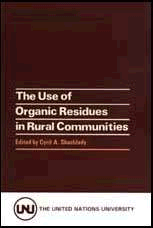
Opening address[edit | edit source]
H. Tb. Bachtiar Rifai
Chairman, Indonesian Institute of Sciences
In this gathering you will review the situation of organic residues in Indonesia as well as in other countries to assess the availability and avenues of utilization of these residues and their effects on the environment.
Among the economic features of such a country as Indonesia and perhaps the countries of some of our foreign guests are a high population growth rate and agricultural production. The effort to produce food for the growing population inevitably generates enormous quantities of organic residues that are not utilized or, at best, are under-utilized. Some of these residues are exerting a strain on the environment.
Another feature of countries like ours is the inadequate development of secondary and tertiary industries. Whether the secondary commodity is used or not depends entirely on economic and social constraints. There must be an economic incentive to utilize these residues, even though they are pollutants, and the necessity to abate that pollution should already be an economic incentive. In Indonesia the inadequate use of these residues is due either to their wide dispersal among small production centres - which creates collection and transportation problems - or simply to a lack of the necessary technological information and skill. Serious efforts should be made to find economical ways to utilize these residues. If this can be done beneficially, they will no longer be wastes, but become new resources to add to our existing, limited ones. In this respect, use of residues means better resource utilization.
These residues are cheap, abundant, and renewable. To deal with them we need to build a multidisciplinary venture impinging on all aspects of the economic life of the community. The basis for their utilization is their chemical composition. This includes recognition of the components that could make the residue valuable, e.g., the carbon to nitrogen ratio, or appropriate nutrients, vitamins, and growth factors. Analysis of inert fractions is also very important because they may change the physical characteristics of the residue and affect its use. Detailed information on the characteristics of the residue will determine the appropriate and environmentally sound technology that should be employed to prepare it for use.
There is no one best approach to organic residue utilization. In each and every situation, possible alternatives need to be evaluated in order to choose the most suitable technology to achieve the desired environmental, economic, and social objectives.